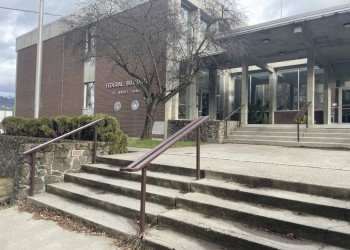Offices
Idaho Panhandle National Forests Offices
Address: 11569 N Airport Road Coeur d’Alene Airport – Pappy Boyington Field (COE) Hayden, ID 83835
Phone: Air Tanker Base: (208) 762-6912 | Helitack Base: (208) 762-6937
Hours: Limited during Winter season (Closed on federal holidays)
Address: 6286 Main Street Bonners Ferry, ID 83805
Phone: (208) 267-5561
Hours: 7:30 a.m. to 4:00 p.m. weekdays (Closed on federal holidays)
Address: 3260 W. Nursery Lane Coeur d'Alene, ID 83815
Phone: (208) 772-3283
Hours: 7:30 a.m. to 4:00 p.m. weekdays (Closed on federal holidays)
Address: 3600 West Nursery Road Coeur d'Alene, ID 83815
Phone: (208) 765-7375
Hours: 7:30 a.m. to 4:00 p.m. weekdays (Closed on federal holidays)
Address: 2502 E. Sherman Ave Coeur d'Alene, ID 83814
Phone: (208) 664-2318
Hours: 7:30 a.m. to 4:00 p.m. weekdays (Closed on federal holidays)
Address: 173 Commerce Drive Smelterville, ID 83868
Phone: (208) 783-2363
Hours: 7:30 a.m. to 12:00 and 12:30 p.m. to 4:00 p.m. weekdays (Closed on federal holidays)
Address: 3232 West Nursery Road Coeur d'Alene, ID 83815
Phone: (208) 765-7223
Hours: 8:00 a.m. to 4:30 p.m. weekdays (Closed on federal holidays)
Address: 32203 Highway 57 Priest River, ID 83856
Phone: (208) 443-2512
Hours: 7:30 a.m. to 4:00 p.m. weekdays (Closed on federal holidays)
Address: 1602 Ontario Street Sandpoint, ID 83864
Phone: (208) 263-5111
Hours: 8:00 a.m. to 4:30 p.m. weekdays (Closed on federal holidays)
Address: 34 Hoyt Drive Avery, ID 83802
Phone: (208) 245-2531
Hours: 7:30 a.m. to 12:00 and 12:30 p.m. to 4:00 p.m. weekdays (April - October) (Closed on federal holidays)
Address: 222 S. 7th, Suite #1 St. Maries, ID 83861
Phone: (208) 245-2531
Hours: 7:30 a.m. to 12:00 and 12:30 p.m. to 4:00 p.m. weekdays (Closed on federal holidays)














